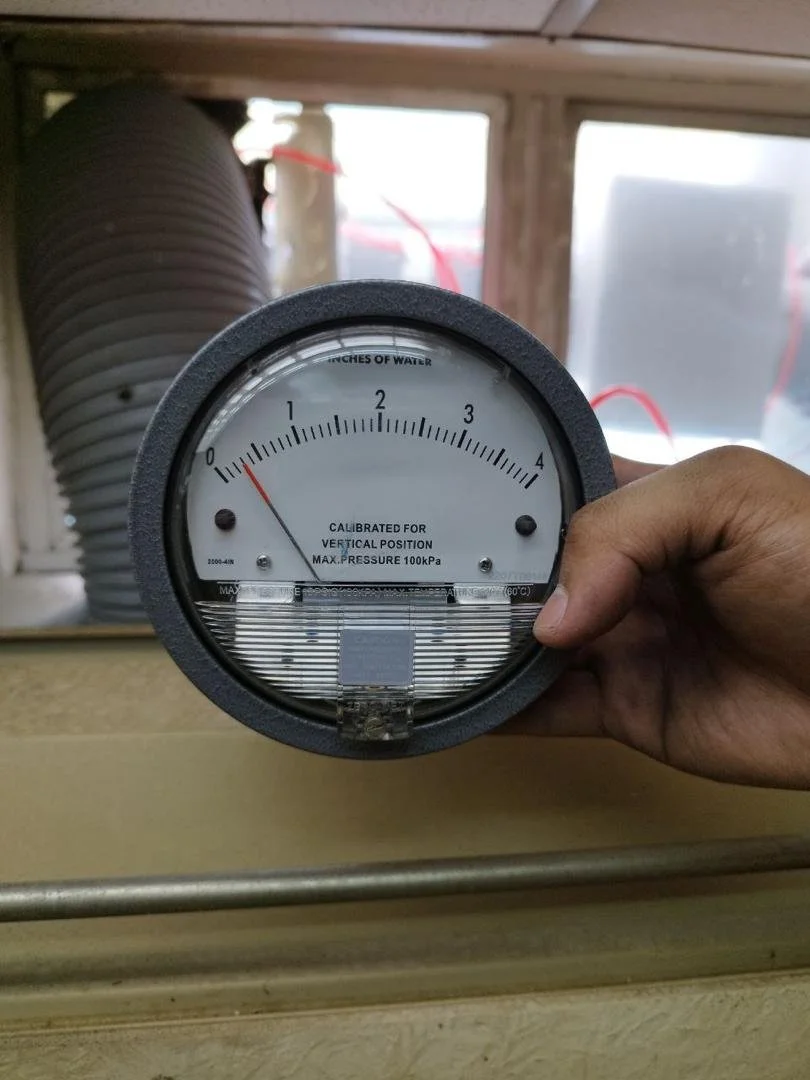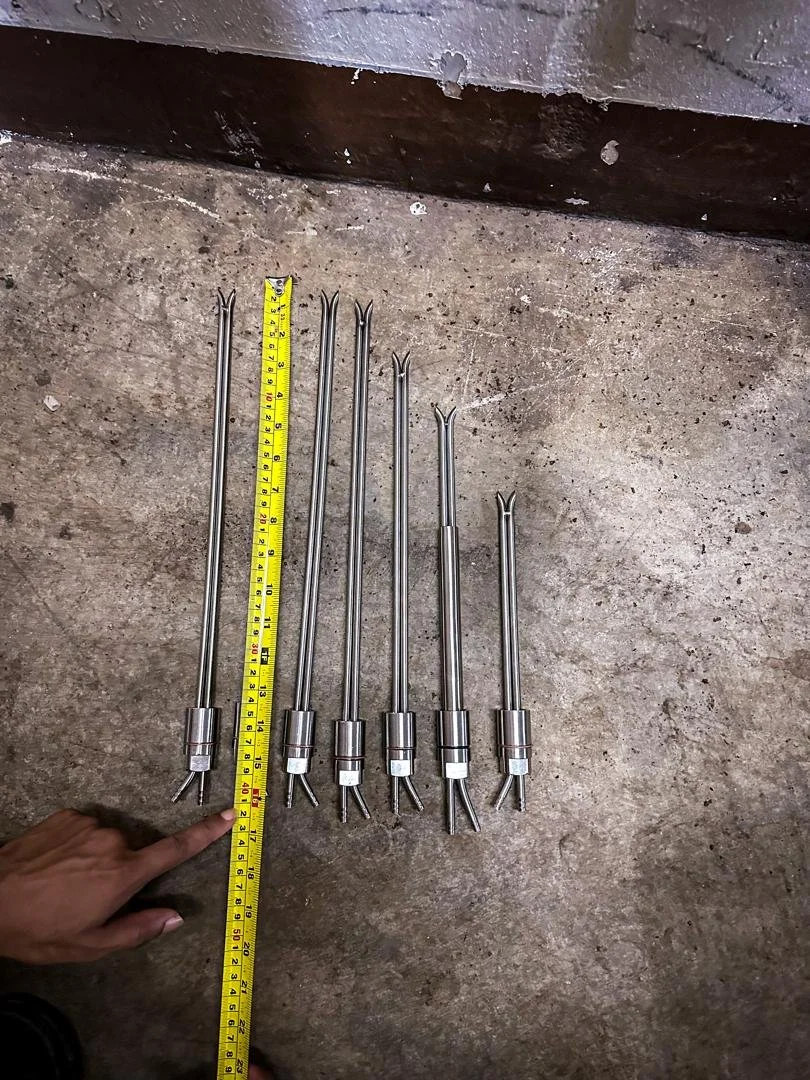What is the function of static pressure readings taken along the ducting of an LEV and GV systems ?
One under utilised parameter is the static pressure. It is usually used just to take resistance across the air cleaning device such as fabric filters and scrubbers packing. The long records of its data in the annual LEV GV thorough report hardly put into any use. This is because, most of the tester are stuck to the basic rule of only using face velocity, capture velocity, transport velocity and efflux velocity for their assessment. The most impending resistance build up in other areas can never be known as we don’t analyse static pressure data. Resistance build up will slowly diminish the system flow rate which will affect every components performances.
Static pressure data is an underdog mainly because it’s periodical evaluation it’s not based on a simple range of basic criterion such as capture velocity which may need 100 to 200 fpm of removal velocity and transport velocity within 1000 to 2000 fpm to act as conveyance velocity . However these criterion are inaccurately used. Static pressure data needs periodic comparisons for its build up. The biggest issues with velocity pressure - Velocity reading is its dynamic properties where it’s can be very inaccurate due to its fluctuating nature when there are no laminar zones available at the point of sampling. The typical upstream and downstream length from disturbance ranges from 5 to 20 times diameter. System installer never ever gives importance to sampling points / holes or port most of the time during design, focussing fully on shortest duct routes. At the end we end up having velocities reading which has high amount of errors compared to actual readings.
This is where the static pressure reading comes as the real most valued player. Static pressure dynamic profile is not as fluctuating compare to velocity pressure as it is not governed by the friction of the duct wall. As such static pressure reading can be taken at a point with upstream downstream lengths of two diameter. On top of it, static pressure is not subjective to fluctuating due to how big the cross section of a duct is. As for velocity pressure, any ducting above 12 to 14 inches would require more sampling lines and traverses for sampling.
Now since we know static pressure is much easier to be used as performance monitoring parameters compared to velocity pressure / flow rate, let us look at its essential usages.
Substitute to hood flow rate
Hood flow rate recording needs velocity pressure reading taken at least at 5 times diameter from the hood connection to the duct. Most of the time this point will not be available due to short connection spools or ending up with provision of sampling point at inaccessible areas on top of the ceiling. This is where the static pressure can be used as the substitute . Recording of static pressure does not require many traverse and can be taken at a location of two times diameter. The baseline static pressure reading can be taken upon proper testing and balancing exercise setting adequate flow rate for the hood to churn the right capture velocity or air changes. The hood static pressure can’t be taken daily to ensure there is adequate hood flow rate before any operation especially for the ones dealing with hazardous airborne chemicals.
2. Differential pressure across elbows for system exhausting particulate aerosols.
Ventilation system can be design based on the type of airborne hazard it conveys ranging from particulate or liquid aerosols to vapour by selecting the adequate transport velocity to avoid condensation, settlement or scaling . However this careful application only works for straight duct run, not for fitting such as elbow, damper, non tapered entry and etc. As such deposition at the abruptly narrowed or bended passageway will take place. These deposition will reduce the cross sectional size increasing the static pressure losses in these hot spots. Fan will need to work extra harder at these points. When the fan needs to cater its power to overcome more than the resistance initially calculated during design, reduction in flow rate will take place. The fan rotates at its rated speed to overcome the resistance and at the same time churning the required flow rate. When there is an imbalance in demand (between system static pressure and system flowrate) the overall performance of the flow rate will deteriorate.
3. Differential pressure across air cleaning device
Air cleaning device capture the airborne contaminant via creating restriction along the ducting. The restrictions will incur baseline static pressure losses. This losses will increase further with the increase of airborne hazard captured due to much higher resistance caused by the deposited component of the filter face blocking the penetration of air . Once the maximum limit of differential static pressure achieved (imminent clogging), of the filter are not serviced / cleaned to reduce the deposition, the continuous increase of the system static pressure will reduce the system flow rate. Reduction of system flow rate, will reduce capture velocity, transport velocity, filtration velocity and efflux velocity, diminishing the system’s efficiency and control integrity.
4. Substitute to efflux velocity
Similar to the application of the hood where adequate flow rate is required to ensure effective removal of airborne contaminant from the workers breathing zones, static pressure can also be used as substitute to monitor efflux velocity. An inadequate efflux velocity performance will cause down wash to take place, pushing down any residual contaminant within the building envelope or adjacent to the property boundary. In the event there was a spike in the emission quality, environmental impact will be imminent. Gauging the chimney performance using static pressure will be much easier to be done without needing to access sampling platform and taking multiple traverses of pressure data. Gauging efflux velocity in this manner would allow immediate intervention in the event of system performance degradation. Discharge of hazardous emissions or extreme case of downwash my increase the ground level concentration. A quick check on the chimney static pressure performance may give us the heads up of any deterioration.
5. Substitute to transport velocity
Transport velocity is not very crucial when transporting vapour which are non condensing. It DO NOT need to be 1000 to 2000 fpm as non condensing vapour can still be conveyed at velocity lesser than 1000 fpm. However starting with fumes to industrial average dust, the minimal transport velocity is crucial. Any ducting routes which has fluctuating transport velocity is subject to be removed and cleaned periodically. The idea of getting someone to measure the transport velocity using traverses and sampling line method using manometer pitot tube is not practical when you do not have a desired team managing it. In the scenario has such, placing a differential pressure gauge marking the optimum static pressure would be the ideal approach to monitor the performance.
Want to start managing your ventilation system effectively ?
Want to ensure your are not wasting the high amp. operation due to excessive resistance across the system ?
Reach out to us in E8 Science And Technology Sdn Bhd to design and install an effective performance monitoring system.






